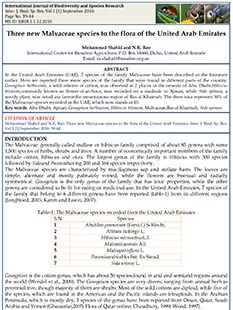Three new Malvaceae species to the flora of the United Arab Emirates
Authors
Mohammad Shahid and N.K. Rao
Year
2016
Publication Source
International Journal of Biodiversity and Species Research
Publication type
Scientific Paper
ISBN
MS ID: IJBSR 1.1.32.2016
Volume/Chapter/Issue
1
Page Number
39-44
